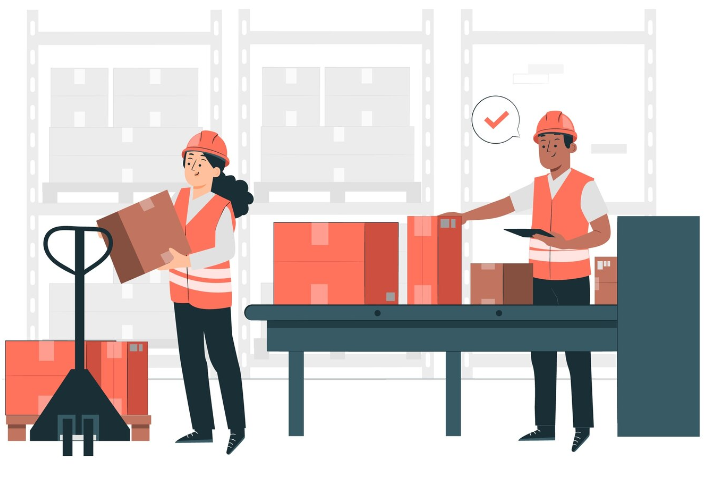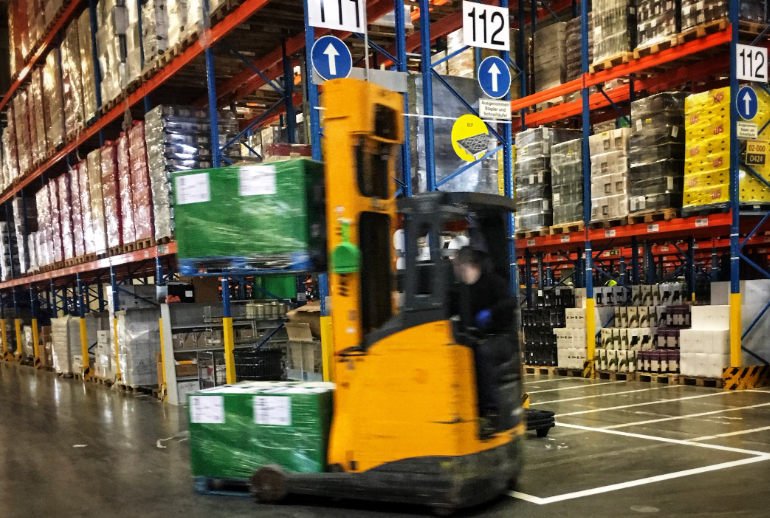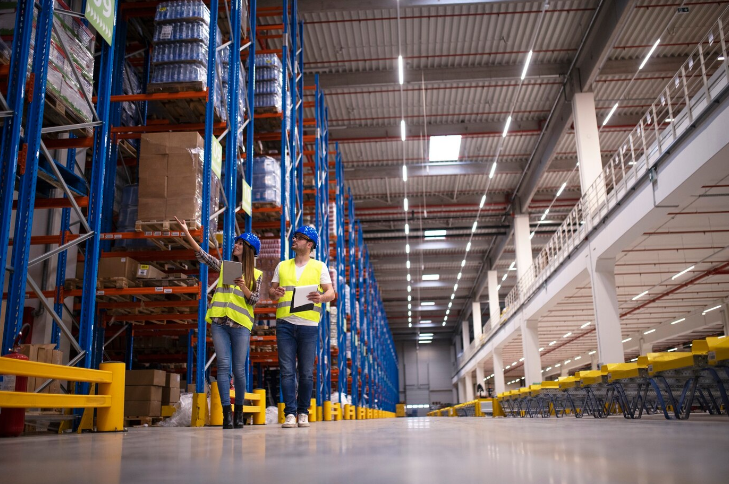Table of Contents
What Is Smart Warehousing? Definition & Technology
Time: Sep 19,2024 Author: SFC Source: www.sendfromchina.com
As supply chain complexities grow, businesses are turning to smart warehousing to streamline operations and meet customer demand. By integrating advanced technologies like automation, AI, and IoT, smart warehouses bring unparalleled efficiency, accuracy, and scalability to warehousing processes. With the pressure to deliver faster and minimize operational costs, smart warehousing is rapidly becoming a necessity for businesses looking to stay ahead.
Our comprehensive guide explores the definition of smart warehousing, the technologies driving it, and why it's reshaping modern logistics.

1. What Is Smart Warehousing
Smart warehousing refers to the integration of automation, data analytics, and advanced technologies to optimize the storage and distribution of goods. In contrast to traditional warehousing, which often relies on manual processes and outdated systems, smart warehouses leverage cutting-edge solutions like artificial intelligence (AI), robotics, and the Internet of Things (IoT). These technologies work in harmony to ensure that inventory is accurately managed, orders are fulfilled quickly, and operational costs are minimized.
Smart warehouses employ real-time data to automate tasks that once required human intervention, such as inventory counting, order picking, and even packaging. With data at the heart of every operation, smart warehousing allows companies to make informed decisions, forecast demand, and improve customer satisfaction through faster, error-free deliveries.
2. Advantages of Smart Warehousing

The transition to smart warehousing offers numerous benefits for companies of all sizes. Here are some of the key advantages that make smart warehousing an attractive option for businesses aiming to scale and remain competitive in today's market.
Enhanced Inventory Accuracy
Inaccurate inventory counts are a common pain point in traditional warehousing, leading to misplaced goods, stockouts, or overstocking. Smart warehouses use real-time tracking technologies like RFID (Radio Frequency Identification) and IoT sensors to monitor inventory levels with extreme precision. It ensures inventory data is always up-to-date, reducing costly errors and allowing businesses to better plan their replenishment cycles.
Cost Efficiency and Resource Optimization
Smart warehousing enables companies to optimize their resources by automating labor-intensive processes such as picking and packing. Automated Guided Vehicles (AGVs) and robotics reduce the need for manual labor, leading to significant cost savings. Furthermore, smart warehouses can optimize energy usage by monitoring temperature, lighting, and equipment performance to reduce waste.
Improved Order Fulfillment Speed
With the rise of e-commerce, customers now expect rapid deliveries. Smart warehouses are equipped to meet these demands by automating order fulfillment processes. AI algorithms can optimize the picking routes, ensuring that orders are packed and shipped faster. Additionally, machine learning models predict customer demand, ensuring that stock levels are sufficient to avoid delays.
3. Warehousing Technologies

Several technologies underpin the success of smart warehousing. These tools are designed to streamline processes, reduce errors, and improve efficiency across all facets of warehouse management.
Internet of Things (IoT) in Warehousing
The IoT is integral to the concept of smart warehousing. IoT sensors are placed on pallets, shelves, and even individual products to track their location, status, and condition in real-time. This real-time data allows warehouses to better manage inventory, prevent stockouts, and maintain optimal storage conditions for sensitive goods.
Artificial Intelligence (AI) and Machine Learning
AI and machine learning enable smart warehouses to make data-driven decisions. These technologies can predict demand patterns, optimize stock levels, and ensure efficient order fulfillment. AI can also analyze warehouse operations to identify bottlenecks and areas for improvement, leading to increased productivity and reduced operational costs.
Automated Guided Vehicles (AGVs)
AGVs are robots designed to transport goods across a warehouse without human intervention. These vehicles are equipped with sensors and navigation systems that allow them to follow predetermined paths, pick up goods, and deliver them to the appropriate location. AGVs reduce the need for human labor and can operate around the clock, improving efficiency and reducing operational costs.
Robotics in Warehousing
Robotics has revolutionized warehousing operations, especially in tasks such as picking and sorting. Robots equipped with advanced sensors and AI can identify and retrieve items quickly, significantly reducing the time it takes to fulfill an order. Additionally, robotic arms are used for packing and palletizing, further streamlining the distribution process.
4. Best Smart Warehousing Practices

Implementing a smart warehouse requires careful planning and consideration to ensure that all components work together seamlessly. Here are some best practices to follow when upgrading to a smart warehousing system:
Seamless Integration with Legacy Systems
For companies transitioning from traditional warehousing to smart warehousing, integrating new technologies with legacy systems is crucial. It ensures a smooth shift without disrupting current operations. Choosing technologies that are compatible with existing ERP (Enterprise Resource Planning) or WMS (Warehouse Management System) software is essential for a successful implementation.
Investing in Scalable Solutions
As business needs evolve, so should warehouse operations. Smart warehousing solutions should be scalable to accommodate future growth. Investing in modular systems that can be easily expanded or upgraded ensures that your warehouse remains efficient as your business grows.
Prioritizing Cybersecurity in Smart Warehouses
With the increased reliance on data and automation, cybersecurity is a critical consideration for smart warehouses. Data breaches or cyberattacks can have devastating consequences, including the loss of sensitive information and disruptions to operations. Implementing robust cybersecurity measures, such as firewalls, encryption, and regular system audits, is essential to protect your warehouse from potential threats.
Employee Training and Adaptation
While smart warehousing reduces the need for manual labor, it also requires a skilled workforce to manage and maintain advanced technologies. Providing employees with the necessary training to operate and troubleshoot smart warehouse systems is essential. It will ensure smooth operations and reduce downtime caused by technical issues.
5. Get Started with SFC Services
SFC stands at the forefront of order fulfillment with cutting-edge facilities in Shenzhen, China. Utilizing sophisticated software, we specialize in seamless and trustworthy fulfillment solutions for ecommerce, dropshipping, and crowdfunding platforms. At SFC, we are dedicated to accelerating your business growth through secure warehousing, efficient processing, customizable packaging options, and adaptable shipping strategies while saving you time and money.
Whether you have or do not have a fulfillment partner, particularly your products manufactured in China, you should consider SFC. Click the button below and get help from SFC logistics experts.
What Makes SFC Special
Over 17 Years of 3PL and Order Fulfillment ExperienceAll-in-one Tracking Number
Popular Platform API Integration
30 Days of Free Storage
No Hidden Fee
Custom Packaging
Worldwide shipping solutions
Value-added Services
6. FAQs
1. What is the difference between a smart warehouse and a traditional warehouse?
A traditional warehouse relies on manual processes and outdated systems, while a smart warehouse integrates advanced technologies like AI, IoT, and robotics to automate tasks and optimize operations.
2. How do smart warehouses improve order accuracy?
Smart warehouses use real-time tracking systems such as RFID and IoT sensors to monitor inventory levels and ensure that orders are picked and packed accurately.
3. What are the key technologies used in smart warehousing?
Smart warehousing relies on technologies like AI, machine learning, IoT, AGVs, and robotics to automate and optimize warehouse operations.
4. Is it expensive to implement smart warehousing?
While the initial investment in smart warehousing technologies can be substantial, the long-term cost savings from improved efficiency, reduced labor costs, and enhanced order accuracy often outweigh the upfront costs.
5. What are the cybersecurity risks in smart warehousing?
Smart warehouses are susceptible to cyberattacks, data breaches, and system vulnerabilities. Implementing robust cybersecurity measures, such as firewalls and encryption, is crucial to protect warehouse operations and sensitive data.
 Post Views:4445
Post Views:4445
Copyright statement: The copyright of this article belongs to the original author. Please indicate the source for reprinting.
Previous Post
What Are the Pros and Cons of China Third-Party Logistics
Next Post
TAGS
Hot Research
Get a Custom China Fulfillment Solution with FREE Storage for 60 Days
 Want to know about our services, fees or receive a custom quote?
Want to know about our services, fees or receive a custom quote?
 Please fill out the form on the right and we will get back to you within a business day.
Please fill out the form on the right and we will get back to you within a business day.
 The more information you provide, the better our initial response
will be.
The more information you provide, the better our initial response
will be.






 TAGS:
TAGS: